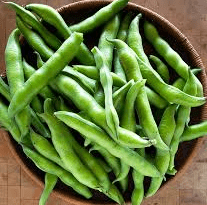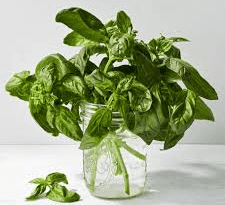The Cauliflower Sepals: Economic Importance, Uses, and By-Products
Cauliflower sepals are the green, leaf-like structures that form a protective layer around the cauliflower head, or curd, before it matures. These sepals, often overlooked, play a crucial role in the development and protection of the cauliflower plant. Cauliflower, scientifically known as Brassica oleracea var. botrytis, is a member of the Brassicaceae family, which also includes broccoli, kale, cabbage, and Brussels sprouts.
The sepals of the cauliflower are part of its floral anatomy, providing a shield for the developing flower buds.
The primary function of cauliflower sepals is to protect the immature flower buds from physical damage, pests, and environmental stressors. They act as a barrier, preventing insects from reaching the delicate buds and shielding them from excessive sunlight, wind, and rain.
This protection is vital for ensuring that the cauliflower head develops properly, as any damage to the buds can result in deformities or reduced quality of the vegetable. The sepals also help to retain moisture around the developing curd, creating a microenvironment that supports optimal growth.
Structurally, cauliflower sepals are similar to the leaves of the plant, but they are typically smaller and more tightly packed around the curd. They have a tough, fibrous texture and are usually a darker green compared to the outer leaves. This fibrous nature makes them less desirable for direct consumption, although they are edible and can be used in culinary applications where their texture can be appropriately utilized.
The sepals contain chlorophyll, which is essential for photosynthesis, although their role in photosynthesis is minimal compared to the larger leaves of the plant.
Nutritionally, cauliflower sepals are similar to other leafy greens, containing vitamins A, C, and K, as well as dietary fiber, calcium, iron, and antioxidants. Despite their nutritional value, they are often discarded or used as compost. However, their high fiber content can be beneficial in promoting digestive health if included in the diet.
In agricultural practices, the management of cauliflower sepals is important for ensuring high-quality produce. Farmers often trim the outer leaves and sepals to enhance the appearance of the cauliflower heads for market. However, excessive trimming can expose the curd to damage, so a balance must be struck. In some regions, cauliflower sepals are used as animal feed due to their fibrous nature and nutritional content, contributing to a zero-waste approach in agriculture.
From a botanical perspective, the development of cauliflower sepals is an interesting aspect of plant morphology. They are part of the plant’s reproductive system, although they do not participate directly in reproduction. Instead, they support the reproductive structures by providing protection and maintaining the conditions necessary for the flower buds to mature.
As the cauliflower plant matures and if left unharvested, the sepals will open up, revealing the true flowers of the plant which will eventually bloom.
In culinary uses, while cauliflower sepals are not commonly used, they can be included in soups, stocks, or as part of vegetable mixes where their fibrous texture is less noticeable. They can also be fermented or pickled, offering an additional use for this often-discarded part of the plant.
Overall, cauliflower sepals are an integral but often underappreciated part of the cauliflower plant. Their role in protecting and supporting the development of the cauliflower head is crucial for producing the high-quality curds that are enjoyed worldwide. Understanding and utilizing cauliflower sepals more effectively could contribute to more sustainable agricultural and culinary practices.
The Economic Importance and Uses of Cauliflower Sepals

1. Agricultural Sustainability: Sepals can be composted, enriching the soil and promoting sustainable agricultural practices by returning nutrients to the earth.
2. Animal Feed: Due to their fibrous nature and nutritional content, cauliflower sepals are often used as animal feed, reducing waste and supporting livestock nutrition.
3. Organic Farming: In organic farming, cauliflower sepals serve as a natural mulch, helping to retain soil moisture and suppress weeds.
4. Nutritional Supplements: Rich in fiber, vitamins, and antioxidants, sepals can be processed into dietary supplements to support human health.
5. Culinary Uses: Though less common, cauliflower sepals can be used in soups, stews, and stocks, adding nutrients and flavor.
6. Biodegradable Packaging: The fibrous texture of sepals makes them suitable for developing biodegradable packaging materials, reducing plastic waste.
7. Pharmaceutical Applications: Compounds in cauliflower sepals, such as antioxidants, have potential uses in pharmaceuticals for their health benefits.
8. Industrial Products: Sepals can be processed to produce cellulose, a raw material for various industrial applications including paper and textiles.
9. Biofuel Production: The fibrous content of cauliflower sepals can be converted into biofuels, providing an alternative energy source.
10. Cosmetic Industry: Extracts from cauliflower sepals can be used in skincare products due to their antioxidant properties.
11. Pest Repellents: Sepals can be used in making natural pest repellents, benefiting organic and sustainable farming practices.
12. Craft and Art Supplies: The natural texture and structure of sepals make them useful in craft projects and botanical art.
13. Educational Material: Cauliflower sepals are used in botanical studies and educational demonstrations to teach plant anatomy and biology.
14. Green Manure: Sepals can be used as green manure, enhancing soil fertility and structure when plowed into the soil.
15. Food Industry: The sepals can be used to create plant-based thickeners and stabilizers in processed foods.
16. Waste Reduction: Utilizing cauliflower sepals in various products helps in reducing agricultural waste, promoting zero-waste practices.
17. Textile Industry: The fibers from sepals can be used in developing eco-friendly textiles and fabrics.
18. Environmental Conservation: By integrating sepals into various eco-friendly products, the environmental footprint of cauliflower farming can be reduced.
Read Also: What Do Honey Bees Look Like
The Products and By-products That Can Be Derived From Cauliflower Sepals

1. Compost: Sepals are decomposed to produce nutrient-rich compost for gardening and farming.
2. Animal Feed: Ground or chopped sepals are used as feed for livestock, providing a nutritious supplement.
3. Organic Mulch: Sepals are used as mulch to protect soil, retain moisture, and suppress weeds.
4. Dietary Fiber Supplements: Processed sepals are turned into fiber supplements to aid in digestion and improve gut health.
5. Biofuel: Sepals are converted into biofuel through biochemical processes like anaerobic digestion.
6. Biodegradable Packaging: Processed fibers from sepals are used to make eco-friendly packaging materials.
7. Cellulose: Extracted cellulose from sepals is used in the production of paper and other cellulose-based products.
8. Natural Pesticides: Sepal extracts are formulated into natural pesticides to protect crops.
9. Skincare Products: Antioxidant-rich sepal extracts are used in creams, lotions, and other skincare items.
10. Food Thickeners: Sepals are processed into natural thickeners for soups, sauces, and other foods.
11. Textile Fibers: Sepal fibers are processed into sustainable textiles for clothing and other fabric products.
12. Green Manure: Chopped sepals are plowed into fields to enhance soil fertility.
13. Craft Materials: Sepals are dried and used in crafting and botanical art projects.
14. Educational Kits: Sepals are included in educational kits for teaching plant biology and anatomy.
15. Plant-Based Stabilizers: Extracted compounds from sepals are used as stabilizers in processed foods.
16. Natural Repellents: Sepal extracts are used to create natural repellents for pests and insects.
17. Industrial Enzymes: Sepals are used to produce enzymes for industrial applications, such as in detergents and bio-processing.
Read Also: What Do Bees Use Honey For
Frequently Asked Questions (FAQ’s) About Cauliflower Sepals

1. What are cauliflower sepals?
Cauliflower sepals are the green, leaf-like structures that protect the cauliflower head before it matures.
2. Are cauliflower sepals edible?
Yes, cauliflower sepals are edible, though they are fibrous and usually used in soups, stocks, or as animal feed.
3. How are cauliflower sepals used in agriculture?
In agriculture, sepals are used as compost, mulch, and green manure to enrich the soil and support sustainable farming.
4. Can cauliflower sepals be used in biofuel production?
Yes, the fibrous content of cauliflower sepals can be converted into biofuel through processes like anaerobic digestion.
5. What nutritional benefits do cauliflower sepals offer?
Cauliflower sepals are rich in fiber, vitamins A, C, and K, and contain antioxidants that offer various health benefits.
6. How do cauliflower sepals contribute to zero-waste practices?
By utilizing sepals in products like compost, animal feed, and biodegradable packaging, waste from cauliflower farming is reduced.
7. Are there industrial uses for cauliflower sepals?
Yes, sepals can be processed to produce cellulose for paper, textiles, and biodegradable products.
8. How are cauliflower sepals used in the cosmetic industry?
Antioxidant-rich extracts from sepals are used in skincare products like creams and lotions.
9. Can cauliflower sepals be used as natural pesticides?
Yes, extracts from sepals can be formulated into natural pesticides to protect crops from pests.
10. How do cauliflower sepals support environmental conservation?
By integrating sepals into various eco-friendly products and practices, the environmental impact of cauliflower farming is minimized.
Read Also: 5 Strategies for Lifetime Fitness









